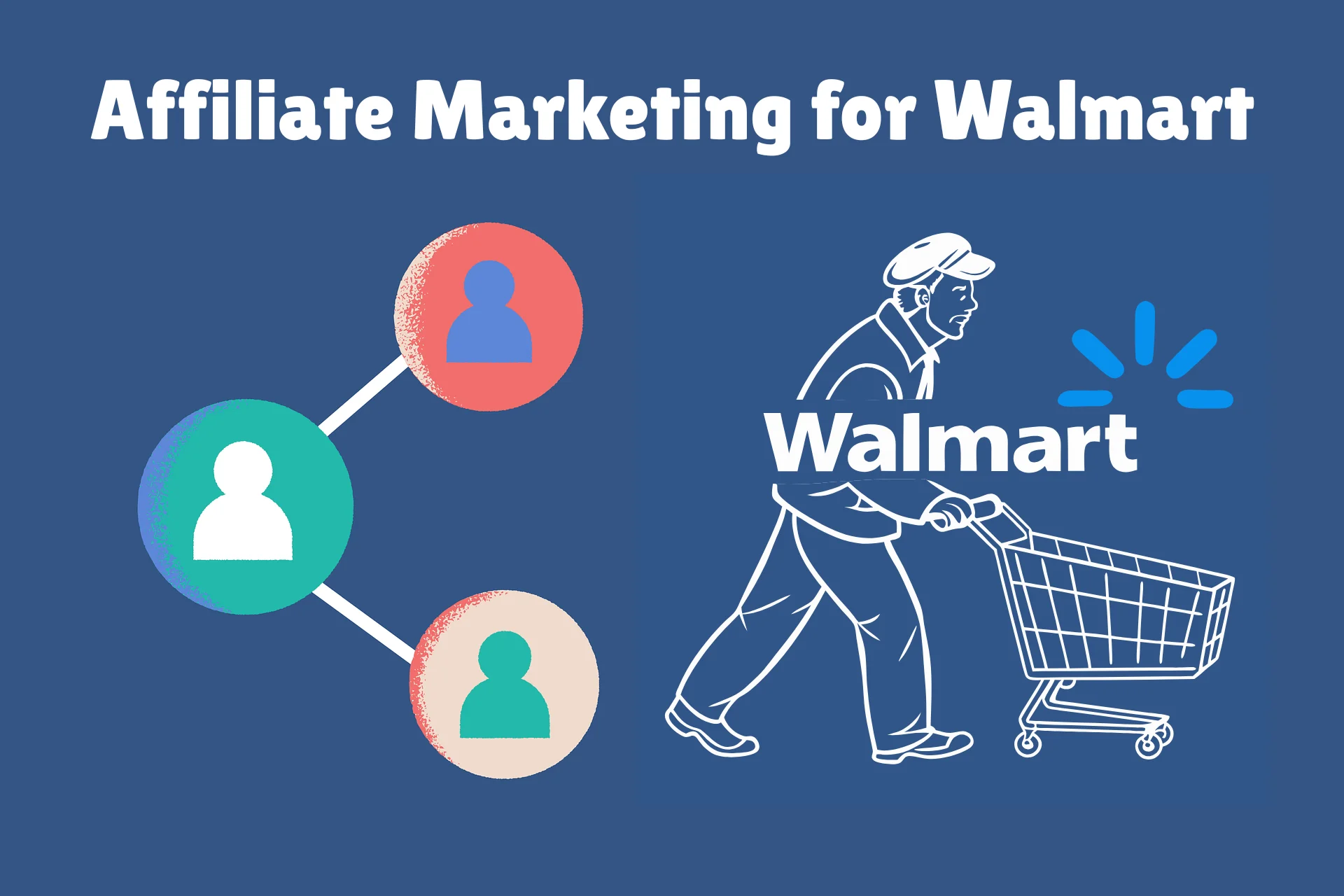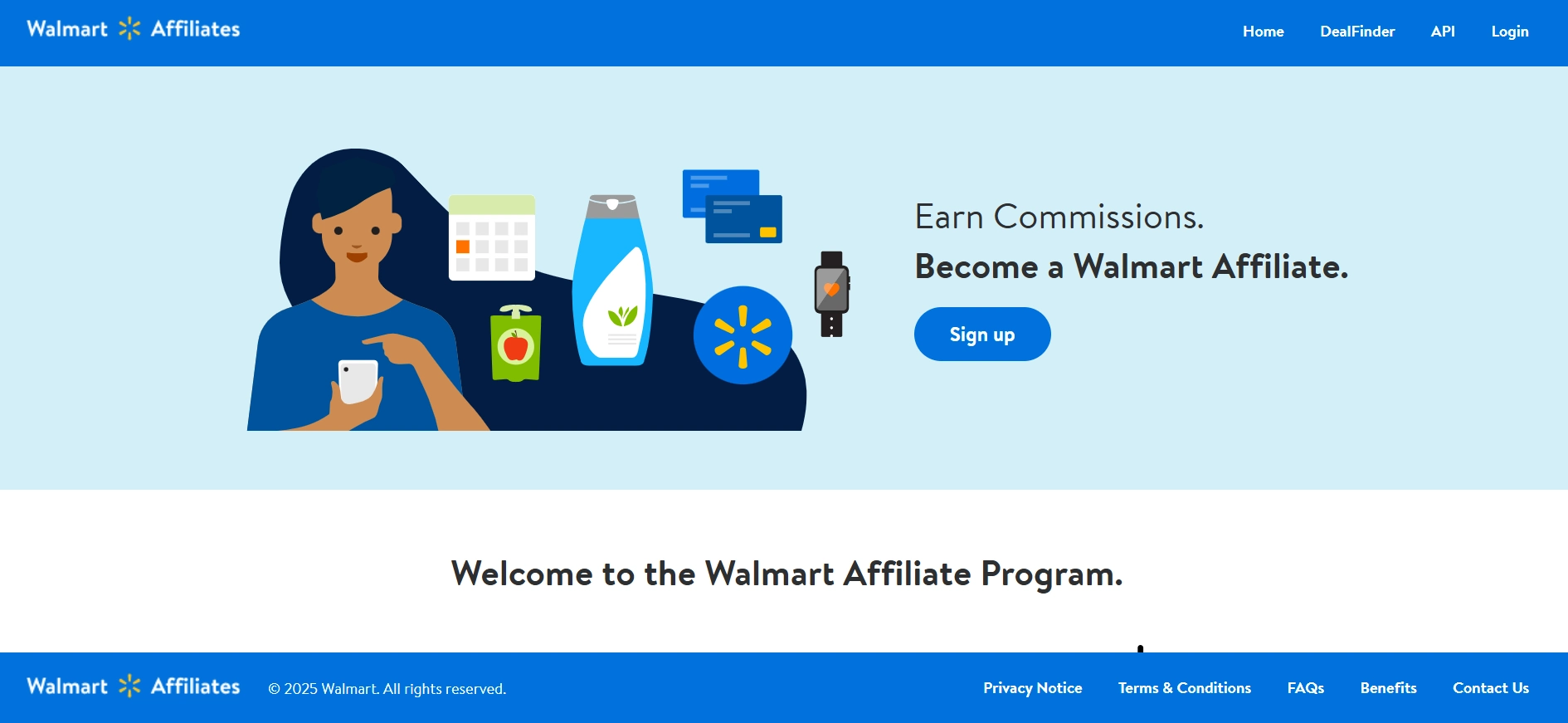How to Start Affiliate Marketing for Walmart (Without Wasting Time on Low-Paying Products)
Learn how to start affiliate marketing for Walmart the smart way. Skip low-paying products and focus on what actually earns commissions.

You’ve probably seen the hype around affiliate programs like Amazon and ClickBank. But Walmart? Quietly, it’s been growing fast—especially since they moved their affiliate platform to Impact. It’s open to bloggers, content creators, and niche site owners. And yes, the approval process is easier than most.
Walmart has nearly 5000 retail stores that make up most of its sales. With millions of daily visitors and one of the largest inventories online. It has become a solid option for affiliates who know how to pick the right products.
But here’s where things get real: just getting traffic doesn’t mean you’ll earn. I’ve seen sites push hundreds of clicks to Walmart, only to make pennies.
That’s the trap—sending traffic to low-value items that don’t convert or barely pay. Many affiliates burn out fast because they treat it like Amazon, without knowing where the money actually comes from.
This guide is about doing it right from the start. I’ll walk you through what makes Walmart’s program one of a kind, which products are worth promoting, and how to build simple content that brings in actual commissions. Not just traffic. Not just clicks. Real returns.
Ready to skip the low-paying junk and build something that works? Let’s break it down.
Key Takeaways
- Walmart’s affiliate program is beginner-friendly but not every product is worth promoting.
- Low-cost items won’t pay much, no matter how many clicks you send. Focus on higher-ticket categories like electronics, baby gear, and home tools.
- Niche down hard. Walmart sells everything, but your content shouldn’t.
- Use data to pick products. Look at Walmart bestsellers, seasonal demand, and commission rates.
- Don’t just chase traffic. Write content that solves real problems—like product roundups, comparisons, or how-to guides.
- Use Pinterest, email, and YouTube to stretch your reach beyond just blog SEO.
- Track what converts. Drop what doesn’t. This is how you scale smart.
- One good funnel beats a hundred random links. Build with intent.
Why Choose Walmart’s Affiliate Program?

Walmart isn’t just another store—it’s a household name. People already trust it, which makes promoting their products easier. No need to explain what Walmart is or if it’s legit. That trust gives you a head start when recommending stuff.
Then there’s the product variety. From baby cribs to smart TVs to garden tools, Walmart has just about everything. That opens the door for niche sites, lifestyle blogs, review channels…you name it.
It’s also one of the easier affiliate programs to join. No massive follower count. No long application forms. If your content makes sense, you’ll usually get in.
You can earn up to 4% commission, depending on the category. Some high-demand items pay less, but many mid-tier or seasonal categories are still solid.
They run on Impact, which gives you solid tracking, deep links, and clean reporting. No clunky dashboards or mystery conversions.
Walmart also offers 30-day cookies—which is generous compared to Amazon’s 24-hour window. That means more chances to earn even if someone doesn’t buy right away.
Bottom line? If you want a trusted brand with wide appeal and low entry barriers, Walmart gives you a strong place to start.
How Walmart’s Affiliate Program Works
Getting started with Walmart’s affiliate program is pretty straightforward. You’ll sign up through Impact, which is the platform they use to manage everything—links, tracking, payments, reporting.
Just head over to their page on Impact, fill out the basic info about your site or content channels, and hit submit. If your stuff looks legit and aligns with their terms, you’ll usually get approved in a few days. No need to stress about huge traffic numbers or having a big brand.
Once you’re in, Impact gives you access to affiliate links, banners, and tracking tools. You can create custom links to any product on Walmart’s site. This is key—you’re not stuck with generic links. You can link to high-converting items directly.
Walmart uses 30-day cookies, which is great. If someone clicks your link and buys anything within 30 days, you get the credit—even if it’s not the exact product you promoted. That’s a big plus compared to something like Amazon’s 24-hour window.
As for payments, Walmart offers up to 4% commission, depending on the product category. Some categories (like electronics) might pay less. Others (like baby items or home goods) often pay more. You get paid through Impact, and they usually process payments on a set schedule—once you hit the payout threshold.
What I like is how clean and reliable Impact is. You get real-time stats, see which links are converting, and track commissions easily. Plus, you can A/B test different product links without juggling spreadsheets or clunky dashboards.
What makes it work is how simple and flexible everything is. Approval’s not a hassle, links are easy to build, and you’ve got full control over what you promote. If you’re already creating content, it won’t take much to start plugging Walmart into your existing setup.
What No One Tells You About Low-Paying Products
Here’s the part most new affiliates skip over—not everything at Walmart is worth promoting. The site’s packed with everyday stuff people already buy: toothpaste, coffee filters, lightbulbs. But these items usually earn you pennies. You might send 100 clicks and only make a dollar.
It’s not just about price. The commission structure hits hardest on low-cost items. Even with a 4% rate, if someone buys a $10 product, you’re getting $0.40. Now stack that against your time writing blog posts, sending emails, or creating YouTube videos. It doesn’t add up.
One of the most common rookie mistakes is pushing basic household items just because people buy them often. Yes, they move fast. But the payout isn’t worth the traffic. It drains your energy and gives you nothing to reinvest.
Instead, your focus should be on higher-margin products—things with mid-range prices and solid commission categories. More on that coming up.
How to Find High-Converting, High-Value Products
If you want real commissions, you’ve got to stop chasing low-ticket stuff. Focus on categories where the average order value is higher and the commission rate still holds up.
Start with home improvement, baby gear, and some kitchen appliances. These tend to fall in the $50 to $200 range, which gives you more room to earn—even if the rate’s just 3% to 4%. That’s a few dollars per sale instead of loose change.
Walmart’s Bestsellers page and seasonal sales sections are goldmines. You’ll find what’s trending in real time—especially during back-to-school, holidays, or big promo events. If you’re using a blog or email list, these trends help you stay relevant and timely.
Also, don’t sleep on third-party tools. Sites like Similarweb, Ubersuggest, Ahrefs, or even a quick Google Trends check can show you what shoppers are already searching for. Combine that with Walmart’s own filters to narrow your picks.
This is where effort starts turning into actual commissions.
Pick a Niche That Fits Walmart’s Strengths
Walmart isn’t Amazon. But it has serious strengths, and your niche should lean into them.
Walmart does best in family-focused categories, budget-friendly essentials, and practical gear. So if you’re in parenting, home improvement, outdoor living, or lifestyle on a budget—you’re in the right place. These niches match Walmart’s customer base and product depth.
Don’t just pick a niche because it sounds good. Match it with your content and traffic sources. If you’re running a Pinterest board on baby tips or a blog about budget DIY projects, Walmart fits naturally. You can link to real products people already trust.
Think in clusters, not one-off products.
For example: a baby registry checklist, a “first apartment setup,” or a summer backyard upgrade guide. These naturally include several items like: cribs, strollers, power tools, patio furniture—and give you multiple chances to earn from one click.
You’re not just selling products, you’re solving real needs with smart bundles.
Build Content That Converts (Not Just Attracts Clicks)
Getting traffic is great. But if it doesn’t convert, it’s just noise. Your content should guide people toward the purchase, not just bring them in.
Start with format. Product roundups work well for Walmart because they let you group related items—“Top 5 Budget Cribs for New Moms” or “Best DIY Tools for Small Home Projects.” These give readers options and raise your chances of a click.
Single product reviews still work but go deeper. Focus on pros, cons, value for money, and who it’s best for.
Structure matters too. Use SEO-focused titles, clear headings, keywords people actually search for, and internal links to related posts. Google likes it, and readers stay longer.
Want to really push conversions? Add comparison tables, feature breakdowns, and FAQs that answer real questions. It keeps bounce rates low and boosts time on page which also helps SEO.
Always think: “What would make me buy this?” Then build content around that.
Recommended Reading: Why Valuable Content Wins in Affiliate Marketing (And How to Create It)
Promote Smart with Email, Pinterest, and YouTube
You don’t need every traffic channel. Just pick the ones that fit your style and work well with Walmart links.
Start with email. Build simple sequences around product roundups. For example, a “Back-to-School Checklist” or “Holiday Gift Guide for Under $50.” Send 3–5 emails that offer value, not just links. Make it feel like you’re helping, not pitching.
I recommend GetResponse for this—it’s easy to set up automated flows, segment by clicks or interests, and keep everything clean. You can track what’s working without getting buried in settings. Plus, their pre-built templates save time when you’re building quick promo series.
Recommended Reading: Affiliate Marketing by Email: Why Your Campaigns Aren’t Converting (And How to Fix It Fast)
Pinterest still drives results if you use it right. Focus on seasonal boards like “Newborn Essentials,” “Budget-Friendly Home Upgrades,” or “Dorm Room Must-Haves.” Use keyword-rich pin titles and descriptions. Link directly to blog posts that feature Walmart products.
To save time and stay consistent, I suggest using BlogtoPin. It’s one of the best Pinterest automation tools I’ve used. You can schedule pins straight from your blog, set up recurring pinning loops, and keep your boards active without logging in every day.
YouTube gives you visual trust. Record simple unboxings, tutorials, or mini-reviews. Don’t overthink production—just be clear, helpful, and honest. Mention Walmart naturally and include your affiliate link below. Bonus: if a product goes viral or gets popular again, your video keeps working.
This is how you make content pull its weight across platforms.
Example of a Profitable Walmart Funnel
Let’s walk through how a simple Walmart affiliate funnel actually made money. Nothing fancy. Just the right mix of traffic, timing, and content.
Traffic Source: Pinterest
Content Type: A blog post titled “10 Affordable DIY Tools Every New Homeowner Needs”
Product Category: Home improvement – cordless drills, tool sets, wall anchors
The post used a roundup format with short reviews, pros and cons, and a comparison table. It answered a search intent like “best tools for new homeowners on a budget.” It linked directly to Walmart with affiliate tags.
Results:
Over a 30-day period:
- 4,300 pageviews
- 370 clicks to Walmart
- 23 sales
- $89.40 earned in commission
Why it worked:
The niche fit was tight. People searching for DIY tools had a purpose—they needed to buy. The content gave just enough info to help them decide, not overwhelm them. The timing (spring season) aligned with home improvement trends. Plus, Pinterest pins were optimized with keywords and fresh images to stay visible.
You don’t need viral content. Just targeted traffic, useful content, and a clear product path.
Tools That Help You Save Time and Earn More
You don’t need tons of tools to crush it with Walmart affiliate marketing. You just need a few that actually make things easier and help you avoid wasting time.
Link Managers: Use a tool like ThirstyAffiliates to manage and cloak your Walmart links. It keeps your URLs clean, organized, and easy to update if Walmart ever changes product links or terms. You can also group links by category and track basic click data.
Recommended Reading: Top 14 Free Link Tracking and Management Tools for Affiliate Marketers
Affiliate Dashboard: Walmart uses the Impact platform, which is solid once you get used to it. Create tracking links for each campaign or blog post. Use the reporting tab to check clicks, sales, and which content actually converts. Don’t ignore the click-to-sale ratio—small tweaks in copy or traffic source can improve it.
Keyword Research: For SEO, Ubersuggest is a great tool to find Walmart product-related keywords with decent search volume and low competition. Look for buyer intent terms like “best budget laptops at Walmart” or “Walmart baby stroller reviews.”
Avoid These:
Skip outdated plugins that slow down your site. Don’t use shady link trackers or auto-link tools that inject affiliate links into everything—it kills trust fast.
Keep it simple. A few right tools will save hours and help you make more without burning out.
Final Tips Before You Start
If you’re serious about affiliate marketing for Walmart, here’s what most people miss.
Don’t chase every product
Walmart has millions of items. That doesn’t mean you should promote everything. Pick a niche Walmart does well in—like baby gear, tools, or home essentials—and build around it. Stay focused. Random products just confuse your audience and clutter your site.
Track what works and cut what doesn’t
Check your Impact dashboard weekly. Look at clicks, conversions, and which blog posts or traffic sources actually bring in commissions. If a category flops, drop it. Put more energy into the ones that perform.
Focus on content, not just the links
People don’t click just because you added an affiliate link. They click because the content helped them solve a problem or make a choice. So make it useful. Teach, show comparisons, share what you’d actually buy.
This stuff works—but only if you treat it like a real business.
Frequently Asked Questions
How do I join the Walmart affiliate program?
You can join Walmart’s affiliate program through the Impact platform. Just sign up for a free Impact account, search for Walmart in the marketplace, and apply. Approval is usually fast and doesn’t require a huge following or existing site traffic, which makes it beginner-friendly. Once approved, you’ll get access to Walmart affiliate links, banners, and real-time tracking tools. It’s simple to get started, but you still need a plan to promote the right products to the right people if you want to make decent commissions.
What are the best products to promote from Walmart?
The best products to promote are high-value and in-demand items. Focus on categories like home improvement, electronics, baby gear, or seasonal bestsellers. These usually offer better commissions and higher cart values. Avoid everyday low-ticket items like toothpaste or paper towels—they take the same effort to promote but pay much less. Use Walmart’s trending product lists and Ubersuggest to spot keywords and search demand before picking.
Can beginners make money with Walmart affiliate marketing?
Yes, but only if you focus. Beginners often promote random low-paying products and wonder why nothing converts. Instead, choose a niche Walmart is strong in, build helpful content around it, and drive traffic from search, Pinterest, or email. Even if your site is new, Walmart’s trusted name helps with conversions. Start with one category, one blog series, and one traffic source. Keep it simple and track what’s working.
Does Walmart pay recurring affiliate commissions?
No, Walmart does not offer recurring commissions. You earn a one-time payout when someone buys through your link—typically within 30 days of the click. There’s no commission for future purchases unless the customer goes through your link again. That’s why it’s smart to build email lists and re-engage readers with product roundups and seasonal guides to drive repeat clicks.
How long does the Walmart affiliate cookie last?
Walmart’s cookie duration is 30 days. That means if someone clicks your affiliate link but doesn’t buy right away, you can still earn a commission if they make a purchase within that 30-day window. It’s a generous window compared to many affiliate programs. But to make it work, you need clear calls to action, relevant content, and strong internal links so people click while they’re ready to shop.






